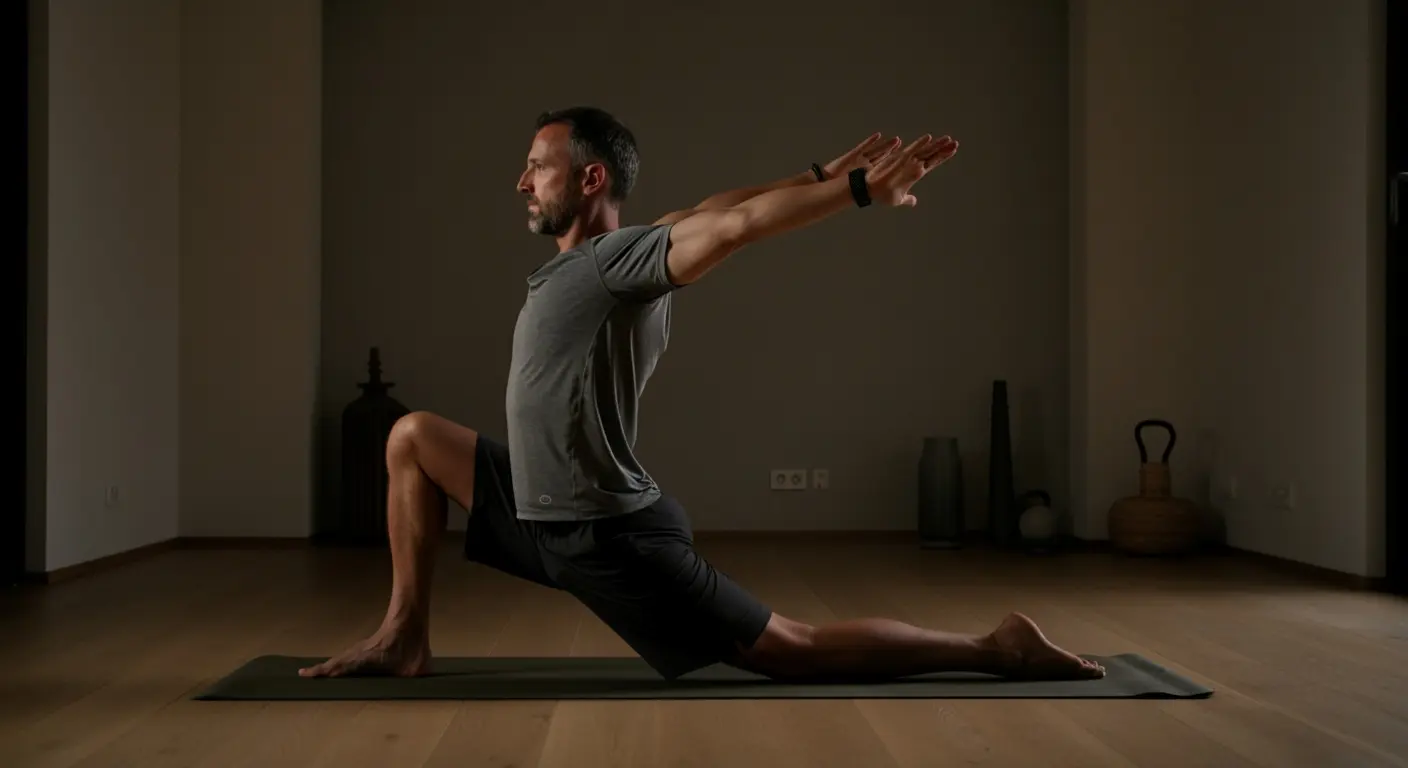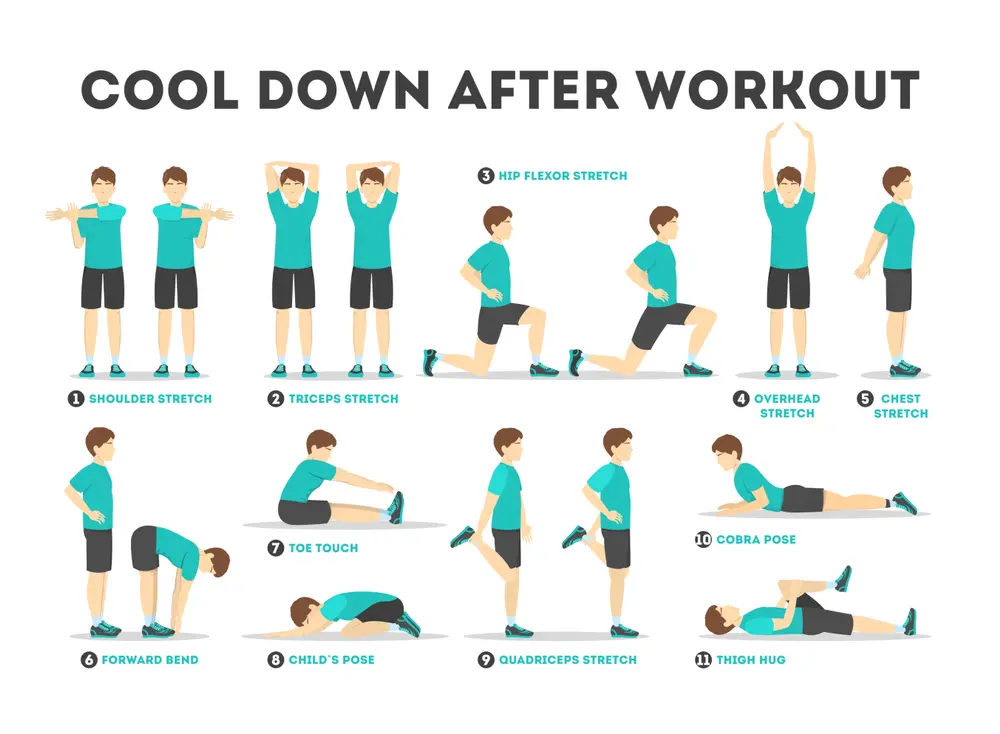Dynamic Bicep and Triceps Stretches Before and After
Stretching is the cornerstone of any effective fitness routine, yet many overlook its critical role in maximizing performance and recovery. For arm muscles like the biceps and triceps, dynamic stretches are especially vital—they prepare the body for action, enhance flexibility, and reduce injury risks. In this comprehensive guide, we’ll explore dynamic bicep and tricep stretches tailored for these muscles, their benefits, and how to integrate them seamlessly into your workouts.
Why Dynamic Stretching Matters for Arm Muscles
Dynamic stretching includes controlled workouts that involve movement to actively use your muscles and joints. Dynamic stretches involve movements similar to those in a workout, preparing the body for action, while static stretching involves holding positions for a long time. Dynamic stretching is beneficial for the arms and triceps, which are important muscles for pushing, pulling, and lifting.
- Boost Performance and Prevent Injury: Dynamic stretches improve blood flow to your arm muscles, which helps deliver more oxygen and nutrients. This process, called muscle activation, helps make muscles more flexible and gets tendons and ligaments ready for stress. A study in the Journal of Sports Science & Medicine found that dynamic stretching can increase upper-body strength by as much as 10% compared to motionless stretching. Warming up your biceps and triceps helps prevent injuries like strains or tears, which can happen during workouts such as bench presses or pull-ups.
- Differences Between Dynamic and Static Stretching: Static stretching, like keeping a triceps stretch for 30 seconds, is most effective after a workout for recovery. In comparison, dynamic stretching focuses on movement patterns that mirror your workout. Doing arm circles before pulling weights helps to increase movement without straining cold muscles. Fitness experts from the American Council on Exercise (ACE) say that doing dynamic stretches before exercising improves flexibility, and static stretches after working out help rest and lengthen muscles.

Dynamic Bicep and Tricep Stretches Before Your Workout
A good warm-up prepares your arms for big lifting or intense workouts. Here are three dynamic moves to add to your warm-up before working out.
Arm Circles for Shoulder and Bicep Warm-Up
- How to Perform: Stand straight with your arms out to the sides at shoulder level. Move your arms forward in small circles, making the circles bigger over 30 seconds. Move in the opposite way for 30 seconds.
- Benefits: This stretching exercise works your arms, shoulders, and chest, and helps make your joints more flexible. Moving in circles helps produce synovial fluid in the shoulder joints, which lowers tightness.
- Pro Tip: Combine this with deep belly breathing to improve oxygen flow and concentration.
Tricep Dynamic Stretch with Overhead Reach
- How to Perform: Lift your right arm above your head, bend your elbow, and place your hand between your shoulder blades. Lightly push the arm back with your left hand for 2–3 seconds, then let go. Do it 10 times for each arm.
- Benefits: This stretch focuses on the long head of the triceps, a muscle that is often overlooked in regular workouts. Moving slowly helps you improve your ability to lift weights high or do dips.
- Science Note: A 2021 study in Sports Medicine found that dynamic tricep stretches can improve muscle fiber activity by 15%, which boosts power during exercise.
Cross-Body Arm Swings for Bicep Activation
- How to Perform: Stand with your feet shoulder-width apart. Move your right arm across your chest while moving your left arm back. Switch sides back and forth for 1–2 minutes.
- Benefits: This explosive action boosts blood flow to the biceps and deltoids while improving coordination. Doing the same movement wakes up the rotator cuff muscles and lowers the chances of shoulder injuries.
Post-Workout Dynamic Stretches for Recovery
Doing dynamic stretches after exercising helps your muscles rest after working hard. These exercises help avoid stiffness and aid in healing.
Dynamic Tricep Stretch with Side Bends
- How to Perform: Stand up straight, put your hands together above your head, and lean softly to the right. Hold for 2 seconds, then go back to the middle. Do the same thing on the left side. Do 10 repetitions on each side.
- Benefits: This stretch alleviates muscle tension in the triceps and latissimus dorsi while working the core. The side bend movement helps the body get rid of toxins by supporting lymphatic flow.
Controlled Bicep Pulses for Gradual Relaxation
- How to Perform: Stretch your arms forward at shoulder level with your hands facing up. Move your arms down in small 1-inch motions for 20 to 30 seconds.
- Benefits: Small moves help remove lactic acid, which lowers soreness. The International Journal of Exercise Science says that doing active stretches after a workout can speed up muscle recovery by 25%.
Gentle Arm Swings to Maintain Flexibility
- How to Perform: Let your arms relax by your sides. Swing them back and forth like a pendulum for 1 to 2 minutes.
- Benefits: This healing method keeps muscles flexible without putting stress on tired tissues. It’s great for relaxing after a tough arm workout.

Tips for Maximizing Stretching Benefits
To get the best results from active stretches, use these proven methods.
- Pair Stretches with Breathing Techniques: Breathe in deeply before you stretch, and breathe out while you are stretching. For example, breathe out as you push your arm back during the tricep stretch. This stretching method helps increase blood to your muscles and relaxes your nerves.
- Consistency and Timing for Optimal Results: Try to do 5–10 minutes of active stretching before your workout and 5 minutes after your workout. Being consistent is important. A study in the Journal of Strength and Conditioning found that doing dynamic stretching regularly for 6 weeks can improve how muscles change by 30%.
Common Mistakes to Avoid
Even small mistakes can reduce how well stretching works or lead to injuries.
- Overstretching or Bouncing During Movements
Avoid sudden or harsh movements, as they can damage muscle tissue. Instead, focus on moving smoothly and with control. For example, slow arm circles are better than quick swings. - Skipping Stretches for “Time Efficiency”
Skipping warm-up stretches may save 5 minutes, but it can lead to a higher chance of harm. A 2019 meta-analysis in BMJ Open Sport & Exercise Medicine found that athletes who skip dynamic stretching have a 22% higher injury rate.
Final Thoughts on Dynamic Bicep and Tricep Stretches
Dynamic stretches are important for balancing training and staying fit over time. Taking time for exercises before and after workouts will improve your performance, speed up recovery, and help you build power for daily activities.
Final Tip: Mix these stretches with power training and enough protein to keep your muscles healthy.
